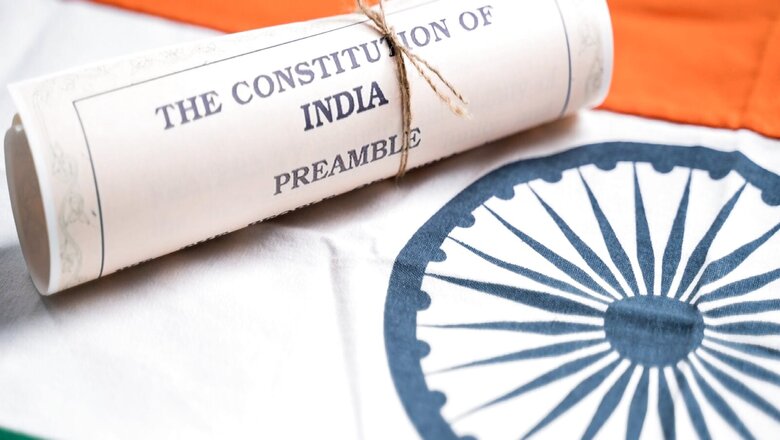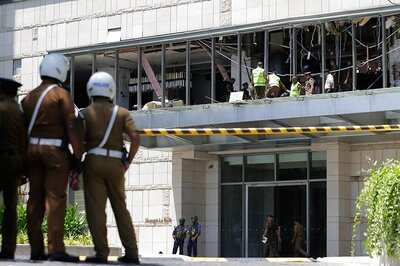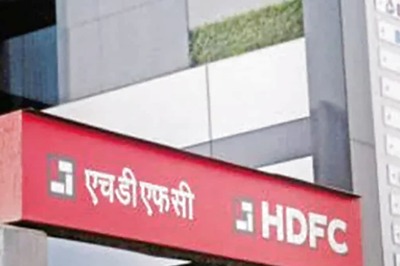
views
The historic ‘Purna Swaraj’ proclamation was officially proclaimed on 26 January 1930, ushering in the final phase of India’s liberation movement with the goal of complete independence from British rule. As a result, 26 January 1950 was chosen as our Republic Day because it was the day India’s Constitution came into effect.
According to Wikipedia, “A Constitution is an aggregate of fundamental principles or established precedents that constitute the legal basis of a polity, organisation or other types of entity and commonly determine how that entity is to be governed.” It’s an interesting choice of words, especially the “fundamental principles or established precedents” that, more or less, subdue what we call the ‘Dharma’. It is the innate universal principle that not only governs and guides humans but also celestial bodies, which we inherit by virtue of being Hindus born in Bharat. We owe this to our civilisation and culture. Of course, this predates the Constitution and doesn’t even warrant any legitimacy because it is so well-known and an established fact! No written legal documentation can subdue Dharma.
A Constitution is meant to embody the country’s cultural ethos and values, which it attempts to strengthen through its written words. In an article, senior advocate Satyajeet Desai of the Gujarat High Court noted that “constitutional supremacy is and has to be the bedrock upon which the edifice of a democracy rests.” And, the very sacrosanct Indian Constitution begins with the preamble stating: “We, the people of India, hereby adopt, enact, and give ourselves this Constitution.” This only corroborates the fact that we, the citizens of India, that is, Bharat, are higher up in the system, so to speak.
In 1938, Jawaharlal Nehru, on behalf of the Indian National Congress (INC), declared that “the Constitution of free India must be framed, without outside interference, by a Constituent Assembly elected on the basis of adult franchise.” The fact that the Indian Republic’s Constitution is the result of deliberation and codification by a body of unelected representatives of the people means that the drafting committee, in itself, necessitates a retrospective in order to fully comprehend the document and its significance for the Indians. About a third of the members of the drafting committee were appointed by princely states. Members of provincial assemblies elected the rest. Finally, even when the Congress was in full swing, Dr BR Ambedkar, the revered and enshrined father of the Constitution, failed to gain a seat in the Lok Sabha in the very first elections held in 1952.
The Constitution was drafted by Sir Benegal Narsing Rau, the Constitutional Advisor to the Constituent Assembly. This draft was then presented to the drafting committee, which appointed Dr Ambedkar to fine-tune it. After this draft is approved by the committee, it is sent to multiple constituencies, scholars, and leaders for their feedback on the same. After the third consultation, it was presented to the Constituent Assembly on 15 November 1948. There were many other scholars and nobles present in the Assembly, it’s not as if the Constitution is only a dialogue between Nehru and Ambedkar.
The Indian Constitution is often considered a mixed bag of borrowings as it draws features from the Constitutions of many countries. Dr Ambedkar rightly said that “it was created after ransacking the known Constitutions across the world.” Though, in a way, India still does not have its own indigenously drafted Constitution, where the “fundamental principles of established precedents” of the land find solace. This may appear ludicrous to some and preposterous to others. The narrative, however, must be unravelled. A good part of the provisions in the draft Constitution has been derived from the Government of India Act, 1935, which the British imposed upon us.
Answering this accusation, Ambedkar had said, “I make no apologies. There is nothing to be ashamed of in borrowing. It involves no plagiarism. Nobody holds any patent rights in the fundamental ideas of a Constitution.” Provisions of the Constitutions of Britain, Ireland, USA, Canada, South Africa, France, Australia, the Soviet Union (now Russia), Germany, and Japan have been invoked in the draft. The predicament is that not a single one of these mentioned countries had an affinity, a cultural past, or a civilisational similarity with India. The Constitution of a country, as rich in culture and heritage as India, must necessarily draw from our civilisational ethos and pulse. Before the Independence of India Act, such a Constitution was imposed by a foreign power and, post-Independence, by the protégés of the British.
Post-Independence, we have seen more than 100 amendments to the Constitution. Some changes have made it all but unrecognisable. But we have resisted its comprehensive re-evaluation. As we enter the Amrit Kaal, it’s time India revisited its “borrowed”, “colonial” and “compromised” Constitution.
Meanwhile, there are a few questions that we don’t seem to ask, perhaps because of the sword of political incorrectness that lurks constantly:
- Our state asserts itself to be secular, putatively. And, if we truly believe that religion should be kept separate from state affairs, the corollary is also appropriate. Why are a Hindu temple’s revenues and its educational establishments controlled by the government but those of a mosque or a church are not?
- Article 14 of the Constitution of India guarantees equality to all citizens, hence rendering the concept of minority and majority mute. Then why do we have a ministry for minorities, minority subsidies, and minority scholarships?
- If the questions and thoughts of the silent majority, such as those above, are not given space in the land of their birth, where is it expected to have freedom in the first place? These questions are not of civilisational supremacy but have been narrowed down to a question of the religious freedom and dignity of the Hindus.
The time is ripe to revisit the Constitution and bring it closer to Bharat’s cultural and civilisational ethos and values.
Yuvraj Pokharna is an independent journalist and columnist. He tweets with @pokharnaprince. Views expressed are personal.
Read all the Latest Opinions here


















Comments
0 comment